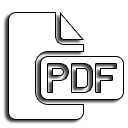F Formulation And Evaluation Of Fast Disintegrating Tablets (FDT) From Papaya Leaf Extract (Carica Papaya L.) With Varied Concentrations Of AC-DI-SOL As Superdisintegrant
DOI:
https://doi.org/10.33859/jpcs.v4i1.483Keywords:
Ac-Di-Sol Concentration Variations, Papaya Leaf Extract (Carica Papaya L.), Fast Disintegrating Tablet (FDT)Abstract
Background: One of the risk factors that can cause an increase in the incidence of morbidity and mortality in patients with hypertension is patient non-adherence in taking antihypertensive drugs. As we get older, there is a decrease in the function of the tongue in achieving muscle pressure to make effective movements, which can cause difficulty swallowing drugs in solid dosage forms. This can be overcome with FDT preparations which can be disintegrated in the mouth without having to use water.
Objectives: To compare the evaluation results of fast disengtengrating papaya leaf tablet formulation (Carica papaya L.) and to determine the effect of Ac-Di-sol concentration from fast desingtengriting tablet (Carica papaya L.) preparation
Method: The method used is a quasi-experimental design with a non-equivalent control group design by comparing the results of the intervention with a control group from the formulation evaluation.
Results: The tablet hardness test (hardness tester) obtained a significance result of 0.17 <0.05, which means that there is a difference in tablet hardness in all formulas. In the friability tester, the significance results were obtained for formula I, namely in formula III with a significance value (sig) of 0.000 <0.05, which means that the fragility data did not spread normally in all formulas. At the time of disintegration, a significant result of 0.027 < 0.05 was obtained, which means that there was a difference in the disintegration time of the tablets in each formulation. In the disintegration time test, a significance result of 0.139 <0.05 was obtained, which means that there is a difference in each disintegration result in all formulas. In the wetting time test, the significance result was 1.7 < 0.05, namely the wetting test aimed to determine the time required for the tablet to be wetted by water. So it can be said that there are significant differences in each formulation.
Conclusion: Based on the results of the organoleptic test, all of the tablet formulations produced had a brown color, with a bitter taste, smelled of mint and papaya extract and were round in shape. The combination of the concentration ratio of Ac-Di-Sol and Mannitol has the effect of evaluating friability, hardness, disintegration time and wetting time on Fast Disintegrating Tablets Papaya leaf extract (Carica papaya L.) Formulation III with 5 mg Ac-Di-Sol is the most effective formulation. optimal for Fast Disintegrating Tablets Papaya leaf extract (Carica papaya L.).
References
Adam, L., & Aswad, A. (2020). Pemberian Jus Carica Papaya L Terhadap Penurunan Tekanan Darah Pada Penderita Hipertensi. Jambura Health and Sport Journal. https://doi.org/10.37311/jhsj.v2i2.7048Adeyeye.
Adeyeye, A. &. (2010). Photochemical and nutrien evaluation of carica papaya (pawpaw) leaves. IJARRAS. 5(3), 325–328.
Allen, L. V., Popovisch, N. G.,& Ansel, H. C. (n.d.). Ansel’s Dossage Forms and Drug Delivery systems 9th Eddition. Philadelphia Lippinkott Williams and Wilkins.
Depkes, R. (2020). Farmakope Indonesia Edisi Ke-5 Jakarta Departeman Kesehatan Republik Indonesia.
Fitriani mia, et al. (2022). Formulasi Fast Disintegrating Tablet Ekstrak Etanol Avicennia Marina Fructus Dengan Metode Serbukasi Basah. 9 no.1.
Jain, et al. (2009). The Role of Calcium, Magnesium, and zinc in Pre Eclampsia. Biologis Trace Elemant. 133 (2), 162–167.
Kuncoro et al. (2015). Formulasi dan Evaluasi Fisik Sediaan Fast Disolving Tablet Amlodipine Besylate Menggunakan Sodium Starch Glycolate sebagai bahana Penghancur. Journal Formagazine, 2(2), 30–39.
lieberman, H., Lachman., S. (1989). Pharmaceutical Dossage Forms: Tablets Volume 1. New York: Marcel Decker Inc.
Notoatmodjo, S. (2018). Metodologi Penelitian Kesehatan. Jakarta: PT Rineka Cipta.
Nurdianti, L. (2018). Formulasi Fast Disintegrating (FDT) Aspirin Sebagai Ntiplatelet Dengan Ac-Di-Sol Sebagai Superdisintegrnt. Formulasi Fast Disintegrating (FDT) Aspirin Sebagai Ntiplatelet Dengan Ac-Di-Sol Sebagai
Superdisintegrnt, 1, no 1.
Nurmalita, et al. (2019). Hubungan Kepatuhan Minum Obat Antihipertensi Terhadap Kualitas Hidup Pada Pasien Hipertensi. Hubungan Kepatuhan Minum Obat Antihipertensi Terhadap Kualitas Hidup Pada Pasien Hipertensi.
Paningrahi, R., & Bahera, S. (2010). A Review on Fast Dissolving Tablets. Webmed Central Quality and Pasien Safety. A Review on Fast Dissolving Tablets. Webmed Central Quality and Pasien Safety, 1 (9), 1–15.
Rustiani, Erni, Andini, S., & Musnawati, M. (2019). Formulasi Fast Desintegrating Tablet (FDT) Sari Buah Jambu Biji Merah dengan Perbedaan Konsentrasi Ac-Disol. Pharmaceutical and Biomedical Sciences Journal (PBSJ). https://doi.org/10.15408/pbsj.v1i1.12573
Setiyana, N. (2021). Hubungan Pengetahuan Dengan Kepatuhan Minum Obat Antihipertensi. Hubungan Pengetahuan Dengan Kepatuhan Minum Obat Antihipertensi, 2, no 03.
Shailendra & priti. (2011). Taste Making of Ondansentron Hydrochloride and Formulation of Fast Disolving Tablet, J. Chem. Res. 3(4), 472–484.
Tutik Tutik, S. S. (2021). Penyuluhan Daun Pepaya Sebagai Obat Penurun Tekanan Darah Pada Lansia Di Posyandu Lansia Puskesmas Gadingrejo Pringsewu. Penyuluhan Daun Pepaya Sebagai Obat Penurun Tekanan Darah Pada Lansia Di Posyandu Lansia Puskesmas Gadingrejo Pringsewu, JPFM 4.
Downloads
Published
How to Cite
Issue
Section
License
Copyright (c) 2023 Journal Pharmaceutical Care and Sciences

This work is licensed under a Creative Commons Attribution 4.0 International License.



















